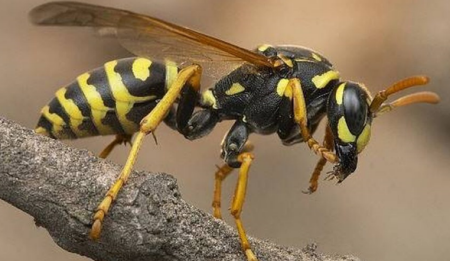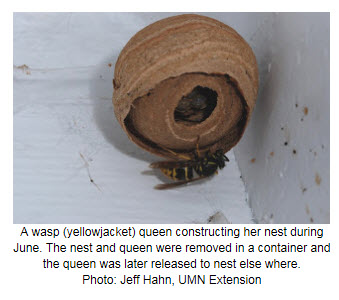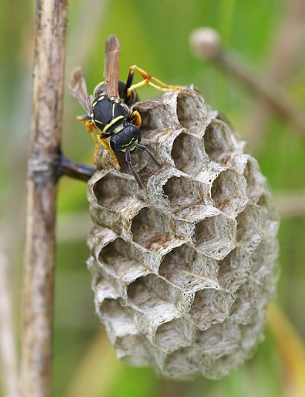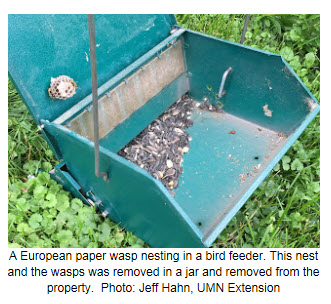Click below to listen to my 2 min. Garden Bite radio show: Wasp nests
Audio Player
Now’s a good time to inspect your home for wasp nests that are being constructed.
 It’s easy to overlook nests when they’re small and there are only a few wasps hanging around. However, that’s the best time to treat them when you can find them. Some wasp nests are built out in the open, like under eaves, and are the easiest to find and control.
It’s easy to overlook nests when they’re small and there are only a few wasps hanging around. However, that’s the best time to treat them when you can find them. Some wasp nests are built out in the open, like under eaves, and are the easiest to find and control.
Jeffrey Hahn is a University Extension Entomologist, he says, if a small, exposed nest is discovered, there are a couple of options for controlling it. Regardless of which method you use, deal with nests at night when the wasps are not very active.
The easiest method is to spray a wasp and hornet insecticide into the nest to kill all of its inhabitants. However, that’s not what some advocate. Here’s information from Northwest Center for Alternatives to Pesticides say. Know what KIND of wasp you’re dealing with….

If you want to control it nonchemically, remove the nest by placing a clear glass or plastic container over it and moving the jar so the nest is knocked down into the container. Slide a piece of cardboard (or something similar) so you can bring the jar down without the wasps getting out. Then slide the lid on the jar. Either release them so they can build a nest somewhere else or place them in a freezer to kill them.

If you see wasps flying in and out of a space, but can’t see their nest, well, those are more challenging! These are the nests typically not discovered until late summer when larger numbers of wasps are present. Control of these sites is more challenging because spraying into the opening rarely gets into the nest itself to kill the wasps. Hahn says an insecticidal dust is the best option. However dusts labeled for buildings aren’t commonly available to homeowners and are can be difficult to find. The best option then is to contact a pest management service in your area to treat the nest.
Check out instructions on a yellow jacket trap from Garden Bite, HERE.
